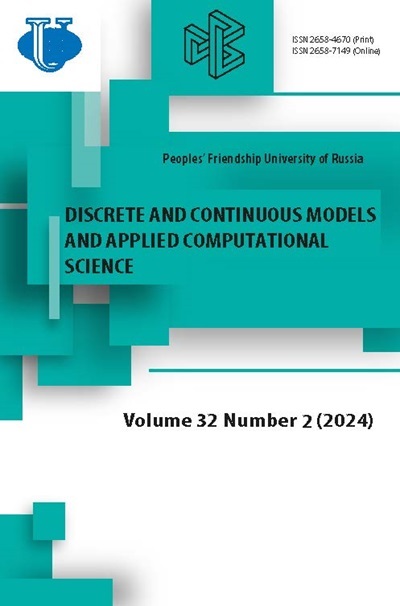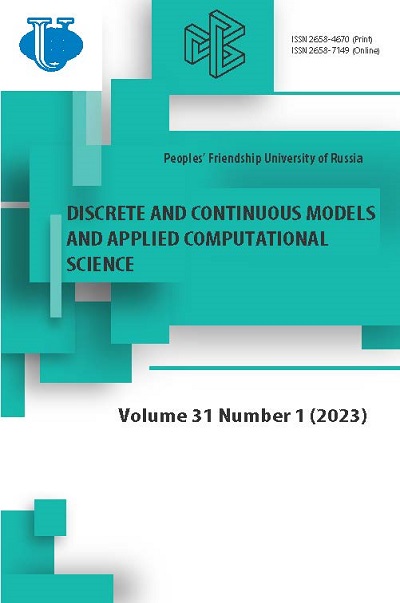Методы извлечения биомедицинских текстов из патентов и научных публикаций (на примере химических соединений)
- Авторы: Колпаков Н.А.1, Молодченков А.И.2,3, Лукин А.В.2,3
-
Учреждения:
- Московский физико-технический институт
- Федеральный исследовательский центр «Информатика и управление» РАН
- Российский университет дружбы народов
- Выпуск: Том 31, № 1 (2023)
- Страницы: 64-74
- Раздел: Статьи
- URL: https://journals.rudn.ru/miph/article/view/34463
- DOI: https://doi.org/10.22363/2658-4670-2023-31-1-64-74
- EDN: https://elibrary.ru/VNWSXI
Цитировать
Полный текст
Аннотация
В данной статье предложен алгоритм для решения задачи извлечения информации из биомедицинских патентов и научных публикаций. Представленный алгоритм основан на методах машинного обучения. Авторами были проведены эксперименты на патентах из базы USPTO. Эксперименты показали, что лучшее качество извлечения продемонстрировала модель, построенная на основе BioBERT.
Об авторах
Н. А. Колпаков
Московский физико-технический институт
Email: kolpakov.na@phystech.edu
ORCID iD: 0000-0002-1640-1357
Master’s degree student of Phystech School of Applied Mathematics and Informatics
Институтский переулок, д.9, Долгопрудный, Московская область, 141701, РоссияА. И. Молодченков
Федеральный исследовательский центр «Информатика и управление» РАН; Российский университет дружбы народов
Email: aim@tesyan.ru
ORCID iD: 0000-0003-0039-943X
Candidate of Technical Sciences, Federal Research Center “Computer Science and Control” of RAS employee, employee of the Peoples’ Friendship University of Russia
ул. Вавилова, д.44, корп.2, Москва, 119333, Россия; ул. Миклухо-Маклая, д.6, Москва, 117198, РоссияА. В. Лукин
Федеральный исследовательский центр «Информатика и управление» РАН; Российский университет дружбы народов
Автор, ответственный за переписку.
Email: antonvlukin@gmail.com
ORCID iD: 0000-0003-4391-1958
Federal Research Center “Computer Science and Control” of RAS employee, employee of the Peoples’ Friendship University of Russia
ул. Вавилова, д.44, корп.2, Москва, 119333, Россия; ул. Миклухо-Маклая, д.6, Москва, 117198, РоссияСписок литературы
- S. A. Akhondi et al., “Automatic identification of relevant chemical compounds from patents,” Database: the journal of biological databases and curation, vol. 1, pp. 1-14, 2019. doi: 10.1093/database/baz001.
- D. Jessop, S. Adams, E. Willighagen, L. Hawizy, and P. Murray-Rust, “OSCAR4: A flexible architecture for chemical textmining,” Journal of cheminformatics, vol. 3, no. 1, pp. 1-12, 2011. doi: 10.1186/17582946-3-41.
- E. Soysal et al., “CLAMP - a toolkit for efficiently building customized clinical natural language processing pipelines,” Journal of the American Medical Informatics Association, vol. 25, no. 3, pp. 331-336, 2017. doi: 10.1093/jamia/ocx132.
- M. Swain and J. Cole, “ChemDataExtractor: a toolkit for automated extraction of chemical information from the scientific literature,” Journal of Chemical Information and Modeling, vol. 56, no. 10, pp. 1894-1904, 2016. doi: 10.17863/CAM.10935.
- J. Lee, W. Yoon, S. Kim, D. Kim, S. Kim, C. So, and J. Kang, “BioBERT: a pre-trained biomedical language representation model for biomedical text mining,” Bioinformatics (Oxford, England), vol. 36, no. 4, pp. 1234- 1240, 2019. doi: 10.1093/bioinformatics/btz682.
- A. Vaswani, N. Shazeer, N. Parmar, J. Uszkoreit, L. Jones, A. Gomez, L. Kaiser, and I. Polosukhin, “Attention is all you need,” Advances in Neural Information Processing Systems, vol. 30, pp. 5998-6008, 2017.
- J. Devlin, M.-W. Chang, K. Lee, and K. Toutanova, “BERT: pretraining of deep bidirectional transformers for language understanding,” Proceedings of the 2019 Conference of the North American Chapter of the Association for Computational Linguistics: Human Language Technologies, vol. 1, pp. 4171-4186, 2018. doi: 10.18653/v1/N19-1423.
- The OpenNLP Project, http://opennlp.apache.org, Accessed: 202303-07.
- CRFsuite: a Fast Implementation of Conditional Random Fields (CRFs), http://www.chokkan.org/software/crfsuite/, Accessed: 2023-0307.
- J. M. Bernard, “Handling of Markush Structures,” Journal of chemical information and computer sciences, vol. 31, no. 1, pp. 64-68, 1991. doi: 10.1021/ci00001a010.
- S. Heller, A. McNaught, I. Pletnev, S. Stein, and D. Tchekhovskoi, “The IUPAC International Chemical Identifier,” Journal of Cheminformatics, vol. 7, pp. 1-34, 2015. doi: 10.1186/s13321-015-0068-4.
- USPTO, https://www.uspto.gov/patents, Accessed: 2023-03-07.
- T. Mikolov, G. Corrado, K. Chen, and J. Dean, “Efficient estimation of word representations in vector space,” Proceedings of Workshop at ICLR, pp. 1-12, 2013.
- T. Mikolov, W.-T. Yih, and G. Zweig, “Linguistic regularities in continuous space word representations,” Proceedings of NAACL-HLT, pp. 746- 751, 2013.
- C. Cortes and V. Vapnik, “Support-vector networks,” Machine Learning, vol. 20, no. 03, pp. 273-297, 1995. doi: 10.1007/BF00994018.
- J. R. Finkel, T. Grenager, and C. Manning, “Incorporating non-local information into information extraction systems by Gibbs sampling,” Proceedings of the 43rd Annual Meeting of the Association for Computational Linguistics (ACL 2005), pp. 363-370, 2005. DOI: 10.3115/ 1219840.1219885.
- T. M. Mitchell, Machine learning. McGraw-Hill New York, 1997, 432 pp.
















